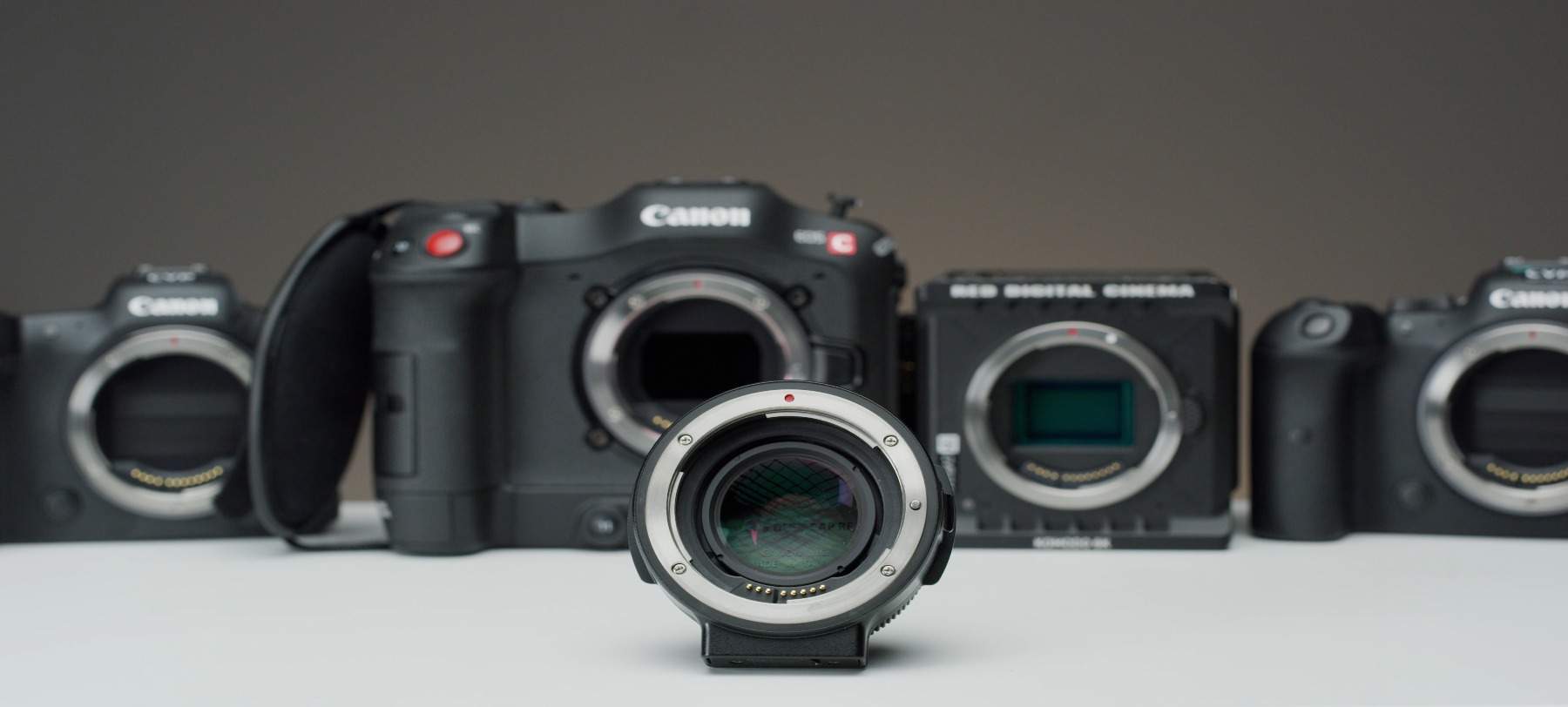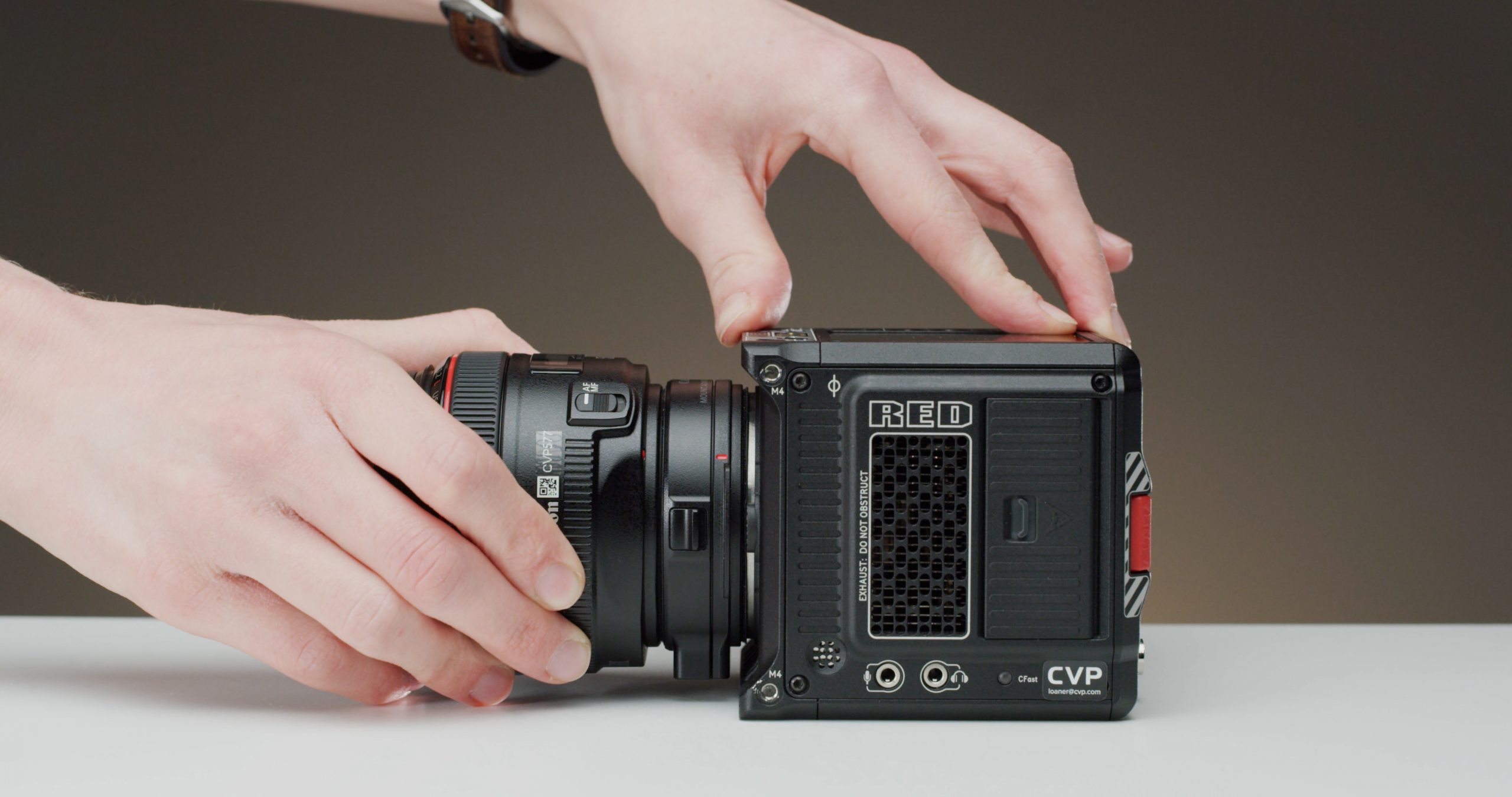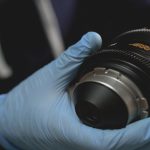
CVP: Go faster and wider!
Posted on Mar 19, 2021 by Super User
Using a focal reducer widens the angle of your lens and increases its speed
SPONSORED BY CVP
While most filmmakers understand what a teleconverter does, there is a lot of uncertainty about a focal reducer. Essentially, it’s the opposite of a teleconverter. With a teleconverter, you’re zooming in on the projected image circle of your lens. This leads to a loss of light and image quality, but zoom in because of the reduced field of view. A focal reducer works the other way, zooming out of the projected image circle. But you gain light and improve your lens’s potential image quality.
Focal reducers are often referred to as ‘Speedboosters’, which is actually a term owned by Metabones. Speedbooster has become commonly used to describe all focal reducers, even from other brands, such as Kipon, Viltrox, Commlite, Aputure, Canon and Z CAM.
How it works
It’s best to start by going over some key terms that are worth knowing. Focal length is one factor that makes up your field of view. A shorter focal length offers a wider field of view, while a longer focal length narrows the field of view. A lens’s focal length is always the same, whatever the camera.
The second factor determining your field of view is sensor size. If you put a 50mm lens on a full-frame sensor, followed by a Super 35 camera, the focal length doesn’t alter; it’s the amount of
the image circle recorded by the sensor that changes.
So, if you used a full-frame 50mm lens and a 50mm lens designed for a Super 35 sensor, the images would be practically identical, with the same perspective and depth-of-field on the same full-frame camera. The difference is that the Super 35 lens would have heavy vignetting, because it doesn’t have the image circle size to cover the larger sensor.
Focal reducers are a fantastic tool for filmmakers. They allow you to achieve wider field of views at longer focal lengths – a key part of a full-frame look
To work out how much focal length is reduced, you need to know the magnification of your focal reducer. Canon’s new focal reducer for RF mount is 0.71x, but these numbers can go as low as Metabones’s XL boosters, which are 0.64x. Subsequently, you can work out the reduction by taking the original focal length of the lens and multiplying it by the magnification factor. Taking a 50mm lens and putting it on a 0.71x focal reducer, for example, the new focal length would roughly equal 35mm.
The maximum aperture also changes. This can be worked out with a calculation that divides the lens’s focal length by the diameter of the entrance pupil. It’s understandable if you don’t want to get involved with the maths. But by using a 0.71x reducer on a 50mm f/1.4 lens, it acts like a 35mm f/1.0 lens. So, even though the lens is still letting through the exact same amount of light, it’s concentrated on to a smaller area, thus increasing the overall brightness.
Next up is depth-of-field. This can be calculated based on focal length, distance to subject, the acceptable circle of confusion size and aperture. Using a 0.71x focal reducer, the focal length is reduced, but maximum aperture is increased. This means that these two changes effectively cancel each other out, and the depth-of-field remains the same.

The benefits
Perhaps the biggest advantage of using a focal reducer is the ability to achieve the full-frame look of a wider field of view, while using longer focal length lenses on a Super 35 camera, and getting an extra stop of light to play with.
When it comes to focal reducers, image quality is another hot topic. Introducing more optics in front of your sensor can instigate more optical flaws, but at the same time, the increased image circle being used can make optical flaws less obvious. In that sense, it could go either way. Your image quality could be improved due to the fact you’re now using more of your lens’s image circle – naturally reducing how noticeable optical flaws are. Nevertheless, you may also notice vignetting, reduced sharpness, and increased aberrations towards the edges of your lens’s image circle. Ultimately, this depends on your lens’s performance and not that of the focal reducer.
So, there are clearly some downsides to using these adapters, including another possible point of failure within your kit. Depending on the adapter, you might also have limited electronic support, such as autofocus, IBIS, iris control and metadata. And it also introduces possible movement in your lens set-up when pulling focus or zooming. Metabones produces Cine versions of their adapters, featuring a locking Canon EF mount that removes any potential play if configured correctly.
Get the right mount
There are so many options on the market now, but most Super 35 and Micro Four Thirds cameras with short flange lens mounts have options for focal reducers. Always look out for the compatibility of your lenses. This could be how the adapter handles the electronics, or relate to mechanical reasons, such as the rear element protruding too far.
Flange focal distance, also known as flange depth or distance, is the distance from the flange plane, or the front of the lens mount, to the sensor’s focal plane. Each lens mount has been designed with a given flange depth. Canon’s EF mount has a depth of 44mm, but the introduction of mirrorless cameras means shorter flange depths are possible. Sony’s E-mount is extremely shallow at just 18mm. This means that adapting lenses has been incredibly popular over the past few years on mirrorless cameras that feature these short flange mounts.
This is all possible with short flange cameras, but it’s not so easy with large flange systems. Generally, if the flange depth is greater than the system you’re working with, an adapter is warranted and should exist.
If you’re trying to adapt a lens that has been designed for a shallower flange depth than the one you want to use it on, it won’t work. That’s worth knowing, because all of these focal reducers have been designed with this in mind. This is why most of them are adapting lenses on to lens mounts with short flange distances.
It might seem complicated, but focal reducers are a fantastic tool for filmmakers. They allow you to achieve wider field of views at longer focal lengths, which is a key part of a ‘full-frame look’, can increase image quality, and give you an extra stop of light which could be handy!
If you want to talk to someone about what focal reducer you need for your system and how to integrate it into your workflow, get in contact with CVP.










